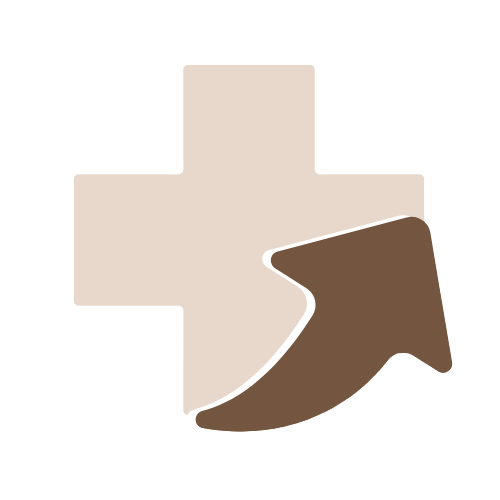Plantar Fibromatosis
Overview
Plantar fibromatosis, also known as Ledderhose disease, is a benign but often troublesome condition characterized by the development of firm, fibrous nodules within the plantar fascia of the foot. The plantar fascia is a thick band of connective tissue that runs along the sole of the foot, supporting the arch. In plantar fibromatosis, these nodules grow slowly and can cause discomfort, pain, and difficulties with walking or standing, especially when they increase in size. Although it is a non-cancerous condition, the symptoms can significantly impact quality of life if left untreated.
Causes
The exact cause of plantar fibromatosis is not completely understood, but several contributing factors and risk factors have been identified:
- Genetic Predisposition: There is a higher occurrence in individuals with a family history of similar connective tissue disorders.
- Trauma or Repetitive Stress: Repeated foot injuries or chronic mechanical stress may contribute to the development of fibrous nodules.
- Medical Conditions: Associations have been noted with conditions like diabetes, epilepsy, and liver disease.
- Dupuytren’s Contracture: Individuals with Dupuytren’s contracture (a similar condition affecting the hands) are more likely to develop plantar fibromatosis.
- Age and Gender: The condition is more common in middle-aged and older adults, and it occurs more frequently in men than women.
- Medications: Use of certain anti-seizure medications like phenytoin has been linked to a higher risk of fibromatosis.
Symptoms
Plantar fibromatosis primarily presents with symptoms affecting the soles of the feet, which can vary in severity:
- Nodules: The most characteristic symptom is the presence of one or more small, firm lumps on the bottom of the foot, usually along the arch.
- Pain: Initially painless, nodules can become painful over time, especially when standing, walking, or wearing certain shoes.
- Tenderness: The area over the nodule may become tender to touch, especially after prolonged activity.
- Tightness or Discomfort: A sensation of tightness or pressure in the foot arch may be reported.
- Difficulty with Footwear: Shoes may feel uncomfortable due to the raised nodules pressing against the sole.
- Progression: In some cases, nodules may stay stable in size, but in others, they can grow and lead to worsening symptoms.
Diagnosis
Diagnosis of plantar fibromatosis is typically clinical but may be supported by imaging studies:
- Medical History: The doctor will review the patient’s medical history, symptoms, and any relevant risk factors such as trauma or systemic conditions.
- Physical Examination: A thorough foot exam is conducted, focusing on the characteristic nodules in the plantar fascia.
- Palpation: The nodules are usually palpable, firm, and located along the medial (inner) arch of the foot.
- Ultrasound: Ultrasound imaging can help visualize the fibrous nodules and confirm their location and size.
- MRI (Magnetic Resonance Imaging): An MRI may be used in complex cases to assess the extent of the lesion and to rule out other foot conditions such as soft tissue tumors.
- Biopsy (Rare): In uncertain cases, a biopsy may be performed to rule out malignancy, though this is rarely necessary.
Treatment
Treatment of plantar fibromatosis depends on the severity of symptoms and progression of the condition. Options include both non-surgical and surgical methods:
- Observation: If the nodules are small and painless, simple monitoring without active treatment may be sufficient.
- Orthotic Devices: Custom-made shoe inserts can help redistribute pressure and reduce pain when walking.
- Stretching Exercises: Gentle stretching of the plantar fascia may help alleviate discomfort.
- Steroid Injections: Corticosteroid injections can reduce inflammation and pain, although they may not shrink the nodule significantly.
- Collagenase Injections: Enzyme injections, though more common in Dupuytren’s contracture, are sometimes used off-label to soften fibrous tissue.
- Physical Therapy: May be recommended to improve foot mobility and reduce discomfort.
- Radiation Therapy: In select cases, low-dose radiation therapy may help reduce nodule size and prevent progression.
- Surgery: Reserved for severe cases where pain significantly affects daily activities. Surgical options include partial or total fasciectomy, though recurrence after surgery is possible.
Prognosis
The prognosis for plantar fibromatosis varies based on individual factors and treatment approach:
- Stable in Many Cases: Some people experience stable nodules that cause minimal discomfort and require no intervention.
- Symptom Management: With conservative treatments, many individuals achieve significant relief from pain and maintain mobility.
- Recurrence Potential: The condition is known to have a risk of recurrence, particularly after surgical removal of nodules.
- Chronic Nature: In some cases, plantar fibromatosis can be a chronic, progressive condition requiring long-term management.
- Quality of Life: With proper treatment, most individuals can manage symptoms effectively and maintain an active lifestyle.
Early diagnosis and tailored treatment can help minimize discomfort and prevent worsening of symptoms, supporting better long-term outcomes.
